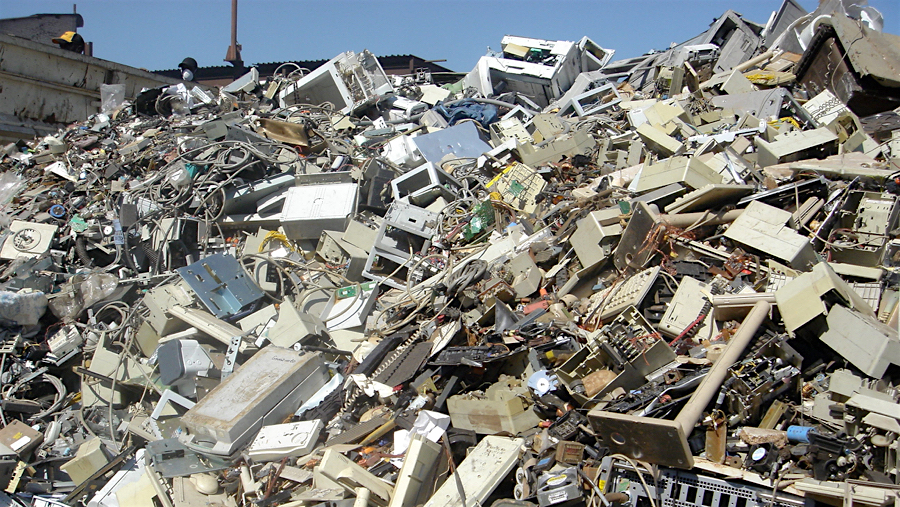
Scottish scientists have developed a new method for recovering gold from old gadgets such as mobile phones, TV’s and computers, which not only doesn’t require the use of toxic chemicals, such as cyanide, but it is also said to be more effective than current techniques.
According to the researchers from the University of Edinburgh, who have just published their findings in the journal Angewandte Chemie, their extraction method could help recover about 300 tonnes of the precious metal used in electronics each year.
Researchers from the University of Edinburgh say their method could help recover about 300 tonnes of the precious metal a year.
They estimate that electrical waste contains as much as 7% of all the world’s gold as the precious metal is a key component of the printed circuit boards found inside most modern devices.
The team’s proposed technique involves submerging printed circuit boards in a mild acid to dissolve the metal parts, before adding an oily liquid containing the team’s chemical compound. That solution then helps extract gold selectively from the complex mixture of other metals, the researchers say.
The findings could aid the development of methods for large-scale recovery of gold and other precious metals from waste electronics, the team says.
“We are very excited about this discovery,” Professor Jason Love, who led the research, said in a statement. “We have shown that our fundamental chemical studies on the recovery of valuable metals from electronic waste could have potential economic and societal benefits.”
The study, funded by the Engineering and Physical Sciences Research Council, is one of many staff and student-led initiatives at the University of Edinburgh to promote the so-called “circular economy,” which encourages reuse of materials and greater resource efficiency.
3 Comments
Altaf
Aqua regia processing of e-waste is in existence for quite some time. May be this company modified few things.
Basic method is Dipping gold containing e-waste parts in Aqua regia (a mix of HCl and HNO3 in a certain ratio) to dissolve gold in the acid. Then the gold is dropped by adding SNB. There is electrolysis method too which is good for industrial scale.
The Real John Smith
So why is this particular acid not considered a toxic chemical?
Fascinaturu
They use a light concentrate of acid (possibly HNO2) as the first acid bath, followed by placing a toluene oil with a certain amine added to it to selectively remove the gold from the acid. After which they use water to create an aqueous gold suspension (water separates the gold from the toluene) I figure the water will cause the gold to precipitate. There are no further details without actually reading the whole paper. The article is based on the abstract.